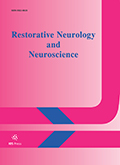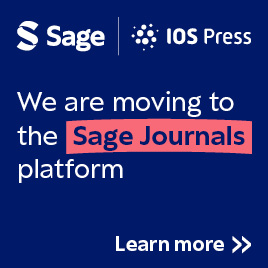Authors: Fusco, Augusto | Gallotta, Maria Chiara | Iosa, Marco | Morone, Giovanni | Iasevoli, Luigi | Trifoglio, Domenica | Saraceni, Vincenzo Maria | Paolucci, Stefano | Baldari, Carlo | Guidetti, Laura
Article Type:
Research Article
Abstract:
Purpose: Recently, Motor Imagery (MI) has been associated with the execution of movements miming in part the mentally represented action (dynamic MI, dMI). Preliminary studies have reported as dMI may improve trainings in sport, with imagery timing close to the physical execution one. This study was aimed to investigate time and spatial parameters of dMI with actual locomotion in people with stroke. Methods: Twelve patients (stroke group, SG) were compared with twelve healthy elderly (elderly group, EG) and twenty young adults (young group, YG). Subjects performed mental representations of different walking (forward, FW; lateral, LW, backward, BW),
…accompanied or not by movements imitating walking (dMI and static MI, sMI). Then, they performed actual locomotion (AL). Outcome measures were related to the time and the number of steps spent for completing the tasks for all the given locomotor conditions. Results: Significant differences were found in patients with respect to healthy subjects, with time in sMI significantly shorter than in dMI (p < 0.004) and AL (p < 0.002), but not between dMI and AL in FW (p = 0.806). In patients, times obtained in sMI and dMI was significantly shorter with respect to those of AL in LW and BW. Patients performed imagery tasks with similar times in all locomotion. Healthy groups did not reveal differences among tasks in BW, while significant differences were found in LW. Analogous results were found in terms of number of performed steps. Conclusions: In patients with stroke, a spatiotemporal functional equivalence with AL was found only for dMI, and not for sMI, in forward walking. This could be due to familiarity with this task. These results might have implications for the rehabilitative techniques based on MI.
Show more
Keywords: Walking, dynamic motor imagery, locomotor body schema, locomotion, task-dependent activity
DOI: 10.3233/RNN-150573
Citation: Restorative Neurology and Neuroscience,
vol. 34, no. 2, pp. 247-256, 2016
Price: EUR 27.50




